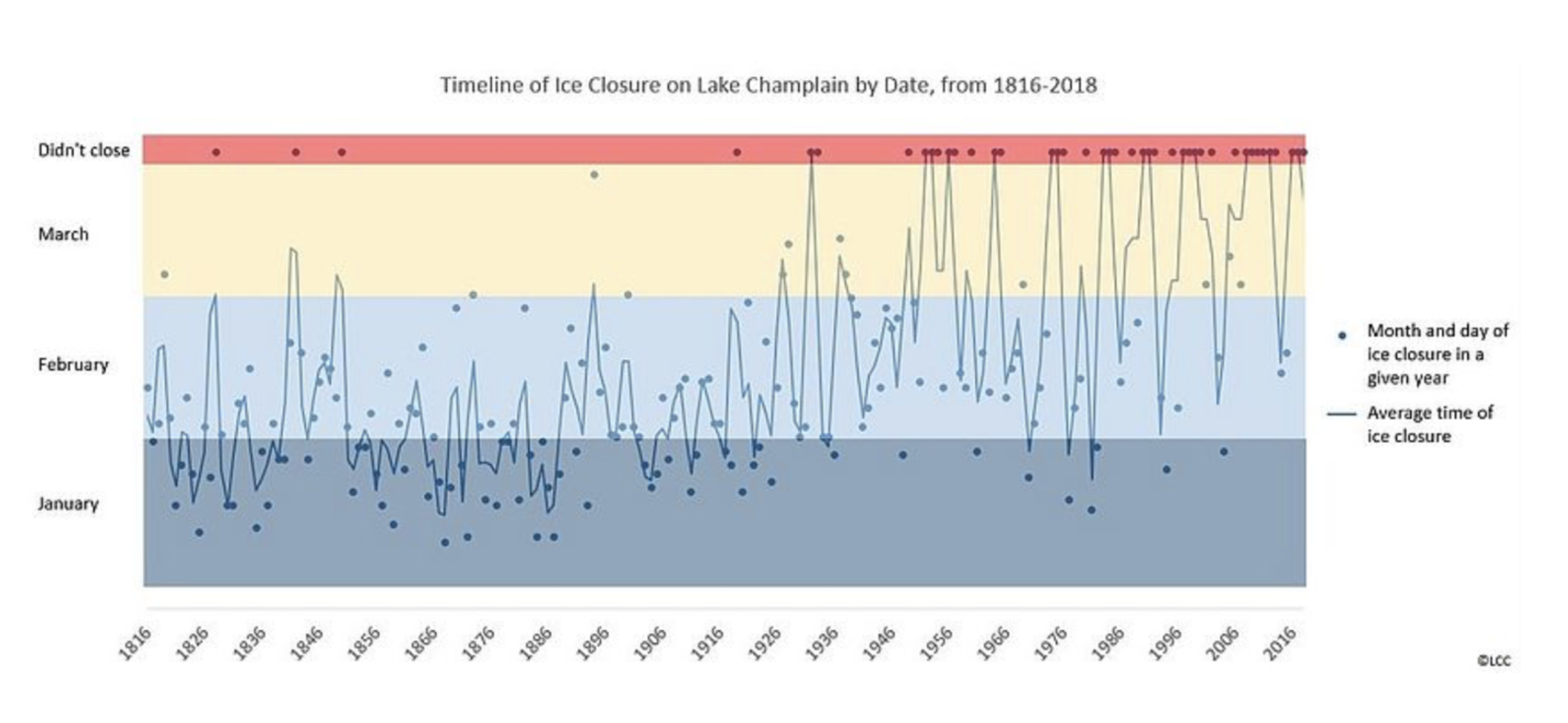A Climate Lesson Frozen in Ice
By Paul Greenberg, Safina Center Fellow
“Ice Fishing” by Billy Brown is licensed with CC BY 2.0. To view a copy of this license, visit https://creativecommons.org/licenses/by/2.0/
This winter I have been up in Adirondack State Park researching a climate change story disguised as a fishing story. Technically ice fishing is my theme, a sport that Americans of European origin have been practicing since they first encountered Native Americans crouched over holes in northern ice, often concealed by a cloak of deer or bison to block the sun’s glare, allowing them to spot pike and trout hovering beneath winter’s own cloak. From a southerner’s perspective ice fishing would appear to be a dying sport then, attached more to those earlier American days, akin to mink trapping or some other means of just getting by when winter slows things to a halt. But ice fishing turns out to be stubbornly popular. The longstanding site iceshanty.com has thousands of dedicated followers and an array of equipment to suit the modern ice fisherman has blossomed. The “hardwater” angler can now deploy sonar through the ice to locate quarry, set up pre-fab shelters of the lightest synthetic materials in the fraction of the time it would normally take to build an old school version out of lumber scrap.
But the one thing that the modern ice fisherman can’t ignore is climate change. And, year-by-year, the ice is getting thinner and the ice fishing season shorter. Thanks to careful record keepers who meticulously set down the extent of ice cover over time the New York North Country offers some of the best year-after-year documentation of climate change available to American scientists. Take for example, Lake Champlain the nearly “great” lake that separates New York State from Vermont and which at one time was a regular gathering point in winter for ice fishers seeking smelt, pike and lake trout.
In the red bar in the chart above we can clearly see that the number of years with “lacks-of-closure” — i.e. failures to freeze — on Champlain increase nearly exponentially over time. From 1816-1936 Champlain only failed to freeze 6 times. After 1976 failure to freeze over was the norm.
All this affected my ice fishing story. For weeks I had backs-and-forths with my ice fishing guide trying to figure out when we might get out on Lake Clear or one of the other smaller lakes that Adirondack ice fishers must now use if they want a taste of winter angling. In the end I had to wait until mid-January and a few fishermen had already gone through. In the end I did get my frozen fish fry (details to follow in my forthcoming story for Adirondack Life Magazine). And in the end the late winter of 2021 proved to be one of the iciest in recent memory. As we’ve just witnessed in Texas temperatures can plummet in the oddest places even as the earth inexorably warms. But that’s just the weather. Weather varies every year while the underlying climate has its own pulse.
In the end what just might kill ice fishing is climate, not weather.
Paul Greenberg is a the Safina Center Writer in Residence. His book The Climate Diet will be published by Penguin Press in April, 2021



